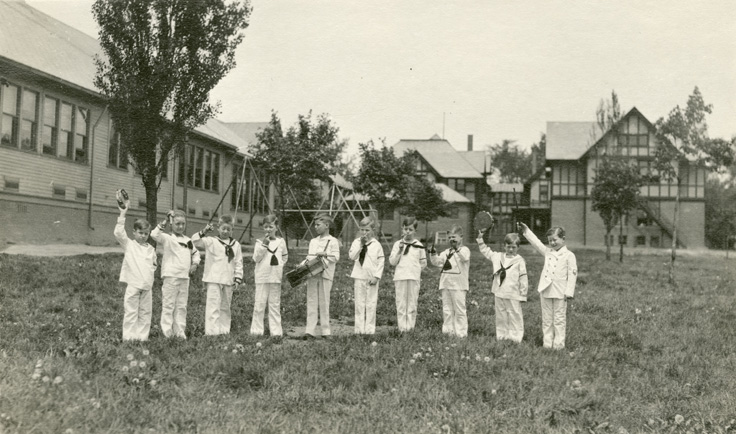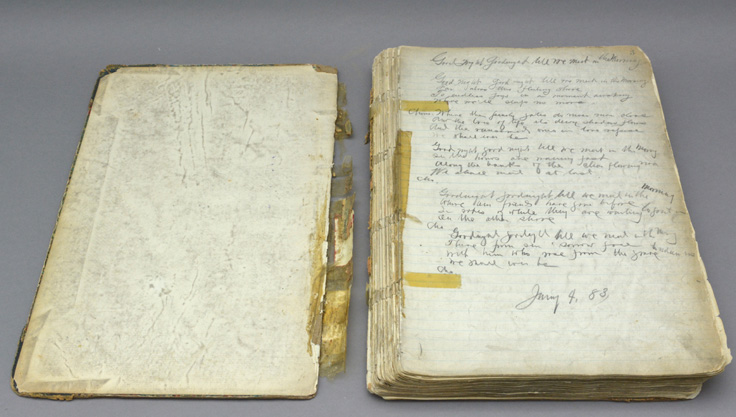
Plan your visit
Your Donation Helps Preserve Indiana’s History

Giving Tuesday is Dec. 3, and we’re asking you to help us save part of Indiana’s history! Your generous donation will help us preserve items in our collection that need a little extra TLC, like the items in the Children’s Bureau of Indianapolis Records Collection.
Donate to help us preserve this invaluable collection here!
Prominent Indianapolis community members formed the Widows’ and Orphans’ Asylum in 1850 to provide care to the city’s poor population. They collected donations from affluent citizens and provided funds to private homes to board destitute women and children or orphans. By 1855, the organization had raised enough funds to build an orphanage. In 1875, the Widows’ and Orphans’ Asylum became the Orphan’s Asylum and continued to care for children from Marion and other Indiana counties by housing them, looking for apprenticeships and indentures as well as adoptive parents. To meet the increasing demand for their services, they built four new buildings from 1869 to 1903. Still in existence today, The Children’s Bureau continues to serve, protect and advocate for children.

Children at the Orphan’s Asylum, circa 1905 to 1910. (Indiana Historical Society)
In this collection, you will find records of the children who were indentured, fostered or adopted through the Indianapolis Orphan’s Asylum and Children’s Bureau as well as records relating to group homes, scrapbooks, newspaper clippings, publications and photographs. This collection also contains meeting agendas and minutes, correspondence, and financial records and documents. Right now, our Conservation Department is hard at work making sure that the physical documents and volumes are preserved for future generations.
“More often than not, these records are being accessed by descendants of those who lived in children’s homes,” says Director of Reference Services Amy Vedra. “Those who have been able to identify family history information from this collection have been overjoyed with finding the connection to their loved ones.”

Before treatment, the ledger’s binding was completely broken, causing most pages to detach. In the past, the covers were reattached using various types of tape. Additionally, the first page was very dirty, making the writing difficult to decipher.
The conservation treatment these items need varies by volume from basic stabilization – surface cleaning, local humidification to flatten creases, small tear repairs or rehousing the item to provide support to a weakened book structure – to full rebinding, like the one above. Many of the materials needing treatment are from the 1870s to the 1920s and have a lot of age-related issues, like deteriorating leather covers and brittle pages. They also show how heavily they were used and have a lot of tape adhered to the bindings.

After treatment, the ledger you see above looks like this. Our book conservator constructed a new binding for the book so it can be used by our Library guests. The first page was cleaned, and the book now opens more easily, making it safe to use for years to come.
So far, our Conservation Department has completed treatments on seven books. But there are 11 to go, and we need your help! Donate on Tuesday, Dec. 3, to help preserve Hoosier history for generations come.
Find out more about the Children’s Bureau of Indianapolis Records Collection here.
In the Spring/Summer 2011 issue of THG: Connections, Harold Henderson wrote an article about the Orphan’s Asylum. Read it here.
Featured image – children cared for at the Orphan’s Asylum, circa 1905 to 1910 (Indiana Historical Society)








